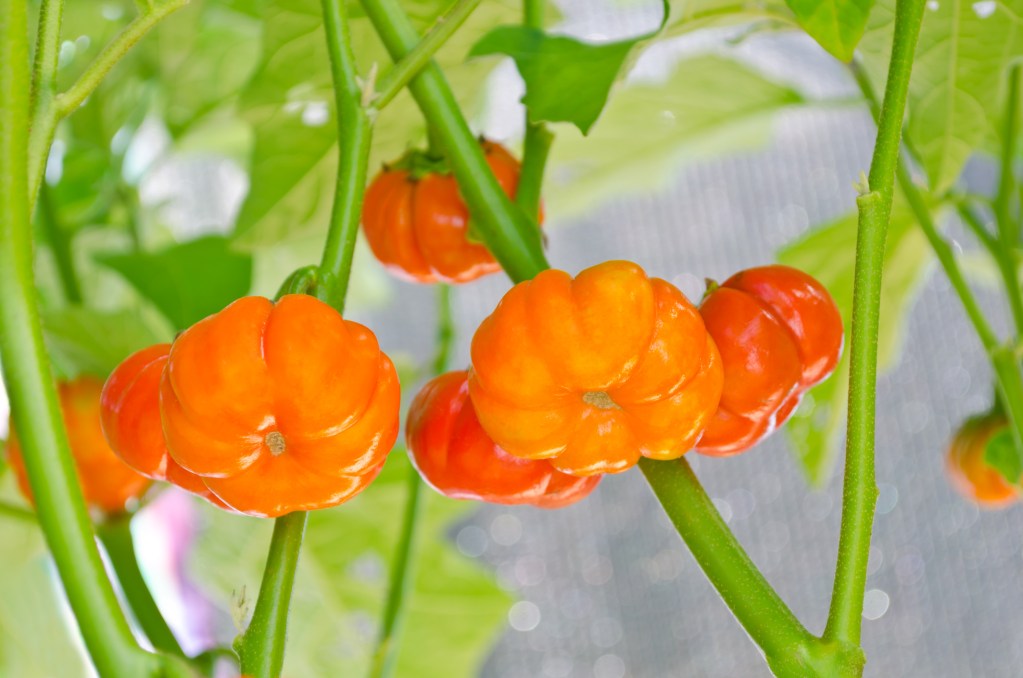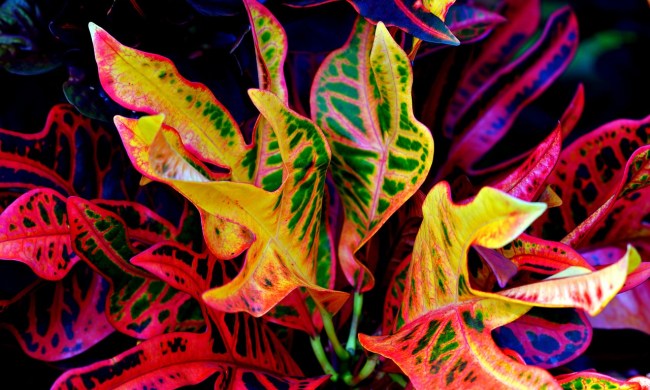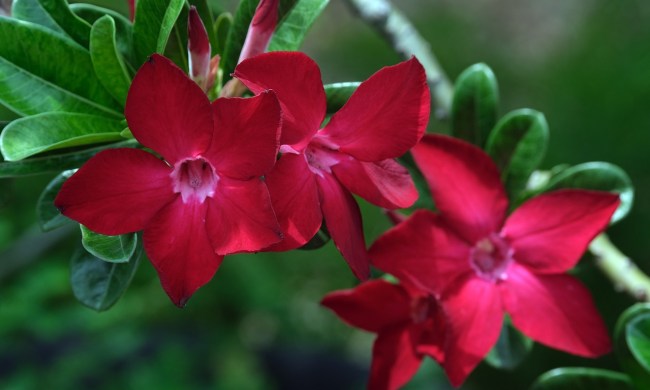For many people, the vibrant reds and golds of autumn are the best part of the season. As the season goes on, however, the colors fade as more leaves fall and begin to decompose. While these leaves are great for your garden, you might find yourself missing their beautiful colors. Luckily, there’s a way to enjoy these colors even after the season ends. Bringing home an autumn houseplant is an excellent way to create a cozy and seasonal atmosphere. From the bright colors of croton and coleus to the more subtle accents of peperomia, these are our favorite autumn houseplants for any season.
Croton

Enter a garden center during the late summer or autumn and you’ll encounter a croton plant. While these fall plants are ubiquitous, they are by no means boring. They typically flaunt dark, lance-shaped leaves with splashes of yellow, red, and orange. Some varieties feature more lobe-shaped foliage, albeit in similar colors. Crotons are relatively easy to care for, but you definitely want to avoid leaving them by drafty windows — this is a surefire way to get falling leaves, and not in a good way. Be sure to place them in gritty, loose soil, as they may attract fungus gnats and get root rot in a heavy and water-retentive medium.
Prince of orange philodendron

One gorgeous, upright philodendron variety that will bring you autumn vibes is the prince of orange, which features leaves that go from yellow to orange to green as they mature — almost like the reverse trajectory of the autumn foliage that drops from trees! Water your prince of orange when the top inch of soil dries out and provide it with bright indirect light. Though it grows slower than trailing philodendrons, you’ll be in awe of it when it unfurls a glossy new leaf! Another honorable mention is the imperial red philodendron, which features burgundy leaves that darken over time.
Red ripple peperomia

If you’re into a burgundy palette this fall, don’t skip the red ripple peperomia. This stunning peperomia features crinkly wine red leaves with thin flower stalks. Ripple peperomias also come in green and silver-green varieties, but the blood red ones are, by far, the most autumnal. Indirect bright light will deepen the color of your plant and prevent it from becoming leggy. Come winter, don’t water your peperomia until the soil is almost dried out.
Strawberry cream syngonium

The syngonium, or arrowhead plant, is accessible, easy to care for, and comes in all kinds of colors. The strawberry cream variety flaunts pinkish bronze leaves that evoke brown autumn leaves, but with glossy, very much alive leaves. This plant is relatively fuss-free when it comes to maintenance. Don’t leave the soil to dry out completely, or else you may get browning foliage and attract pesky spider mites. Every so often, prune your plant back to keep it from spreading out too much.
Mandarin plant

The mandarin plant, or chlorophytum amaniense, is similar to an upright philodendron with its bright green leaves and cheerful orange stems that will complement your crisp autumn leaves. Its most direct relative is the spider plant, and it shares with it a tolerance for most conditions, even cool temperatures and low light levels. (Obviously, of course, it will do best with bright indirect light and moderately warm temperatures!) If leaf edges start crisping, try using distilled water — your mandarin plant may be sensitive to the fluoride in tap water. Another culprit behind rough edges may also be synthetic fertilizer, in which case you can opt for a gentler organic option.
Red-veined fittonia

The fittonia, or nerve plant, can be dramatic when you underwater it (hello floppy leaves!) but its striking appearance makes it worth your effort. This common houseplant features dark green leaves with feathery veins. The veins are often white, but they can also be pink or red in color. To maintain any color that it has, give your plant plenty of indirect light. Along with providing it with sufficient humidity, watering to keep the soil consistently moist (but not soggy) is key to keeping your plant happy. Just don’t let it go through too many dry spells, or else it may permanently wilt.
Ornamental eggplant, aka pumpkin on a stick

Yes, a pumpkin on a stick is very much a real thing! Technically speaking, this plant, or the solanum aethiopicum, is actually an ornamental eggplant, but it features fruits that are bright orange in color, appearing almost pumpkin-like. The fruits are edible and have a bitter, peppery taste to them. In loose, well-draining soil, the pumpkin on a stick can grow up to four feet tall. If you don’t want to commit to growing an entire plant, some grocery stores, such as Trader Joe’s, even sell branches that can last a few weeks in water.
Coleus

Coleus is a low-maintenance houseplant that is sure to please everyone. Its leaves can be green, red, copper, and pink, and many varieties are multicolored. With its small size and love of indirect light, coleus makes an excellent office or dorm plant. Water them regularly and keep your coleus away from windy or drafty areas. When kept in a small pot, the coleus stays relatively small. However, some varieties can grow much larger if planted outdoors or repotted into larger pots. For the best fall colors, try these coleus varieties: Golden Dreams, Royale Apple Brandy, Rediculous, and Wicked Hot. These can be grown in sun or shade, although their colors are more vibrant when they have more sunlight.
Mums

Foliage is usually the best way to bring fall colors indoors, since it tends to last longer. However, if you’re craving some beautiful autumn-colored flowers, then there’s nothing quite like a mum. From burnt orange to deep red and sunny yellow, mums come in practically every fall color. They’re also heavily associated with the season, since they tend to bloom near autumn and are frequently sold around that time. While outdoor mums are typically grown as annuals due to their relatively low cold tolerance, mums are actually perennials. When grown indoors, where it’s easier to keep them warm, you can grow mums year-round and enjoy tons of lovely flowers.
Autumn plants don’t have to be gourds from your fall harvest or the dying leaves dropping from trees! Invest in a houseplant that will last and bring you joy all throughout the season and the year. Plenty of indoor plants, such as crotons, fittonias, and more, can evoke an autumn mood with beautiful warm-toned foliage that’s not on its way out.




